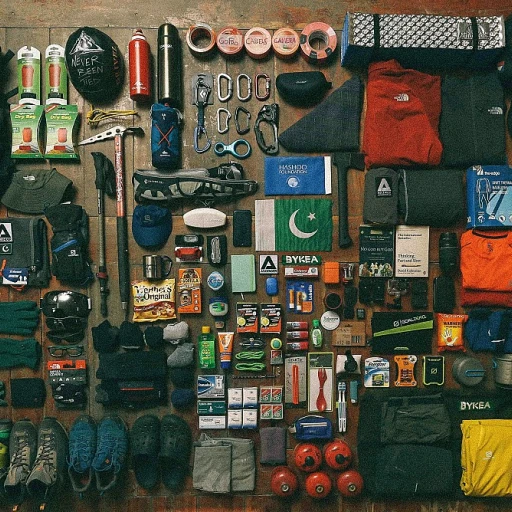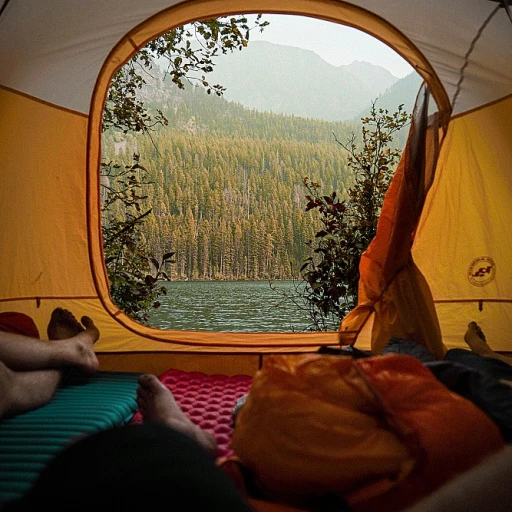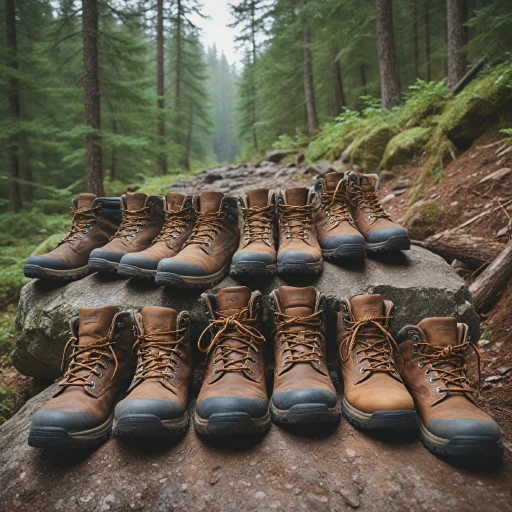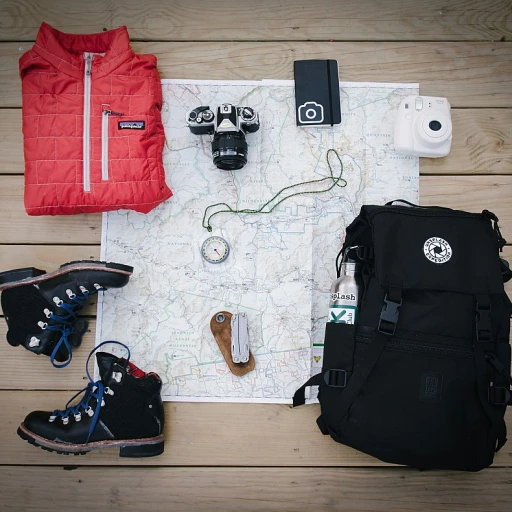
Understanding the Importance of Hiking Boots
Why the Right Pair of Hiking Boots is Essential
For every outdoor enthusiast and seasoned hiker, the most crucial part of any hiking outfit is undoubtedly the hiking boots. Whether you’re trudging through the summer heat in your shorts or navigating a frosty winter trail with layered clothing, your choice of footwear can make or break your adventure. Hiking boots are not merely an accessory; they are the foundation of your entire hiking experience, influencing comfort, safety, and performance.
Role of Hiking Boots in Weather and Terrain
When hitting the trails, understanding the specific demands of your environment is key. Weather conditions can drastically affect how you should outfit yourself. In rainy conditions, for example, a waterproof jacket paired with similarly waterproof hiking boots is imperative to stay dry and comfortable. In contrast, summer hiking demands lightweight and breathable footwear that allows for moisture wicking to prevent discomfort.
Consistency for Long-Haul Comfort
To ensure a pleasant hike, boots must offer the right fit and support. Hiking boots should accommodate your feet well, providing enough space for thicker hiking socks or a double-layer setup when tackling colder climates. When paired with moisture-wicking pants and a suitable mid layer like fleece or merino wool, your boots become part of an ensemble that prioritizes comfort without compromising on style.
Choosing the Right Material for Your Hiking Boots
Materials that Stand the Test of Trails
When gearing up for that much-anticipated hike, the material of your hiking boots can make all the difference. The importance of selecting the right material goes beyond just durability; it impacts comfort, performance, and even the overall aesthetic of your hiking outfit.
Here are a few commonly used materials and their benefits:
- Leather: Known for its durability and relatively better protection against the elements, leather hiking boots are ideal for winter hikes or challenging trails. Although they require more break-in time, they provide excellent support and mold well to the shape of your feet over time.
- Synthetic Fabrics: Boots made from synthetics such as nylon and polyester are generally lighter and dry quicker if they get wet. This material is a popular choice for summer hiking, offering breathability and moisture-wicking properties that keep feet cooler in hot weather.
- Gore-Tex and Waterproof Membranes: For those who often traverse wet or muddy trails, boots with waterproof membranes like Gore-Tex offer essential protection. They ensure your feet stay dry while still allowing a degree of breathability.
The material of your hiking boots should align with your specific hiking needs. For instance, if you predict rain on your hike, opting for waterproof boots might be crucial. On the other hand, those taking summer trails may prioritize meshes or synthetic blends that manage heat and moisture effectively.
To complete a functional hiking outfit, consider pairing your boots with moisture-wicking hiking pants and a breathable layer, like a long sleeve or a fleece, based on the weather and hike duration. Remember, the best hiking shoes form the foundation of a comfortable and safe adventure on any trail.
Fit and Comfort: The Key to a Successful Hike
The Significance of Fit and Comfort in Hiking Boots
When preparing for a successful hike, one cannot overstate the importance of securing the right fit and comfort in your hiking boots. The essence of a good hiking experience largely hinges on the condition of your feet, and discomfort can quickly turn an idyllic trail into an endurance test. Proper fit and comfort in hiking boots become even more crucial when considering the various terrains and weather conditions you'll encounter on your journey. Why Fit Matters A boot that fits well prevents blisters, hotspots, and potential injuries. It offers the necessary support to traverse rocky paths, climb steep inclines, and wade through shallow streams. To achieve this, your hiking boots should provide:- Toe Space: Enough room for the toe box to wiggle your toes freely, preventing bruising on descents.
- Snug Heel: Good heel grip to avoid any slippage or rubbing, maintaining stability on uneven ground.
- Consistency with Socks: Wear your typical hiking socks, like merino wool or moisture-wicking socks, during fittings to ensure accurate sizing.
- Cushioning: Ample cushioning to absorb shock but not too soft that stability is compromised.
- Breathability: Necessary in both summer and winter hiking to keep feet dry and comfortable.
- Flexibility: Boots should complement your natural foot movement, offering both protection and agility.
Special Features to Consider in Hiking Boots
Key Features to Look For When Choosing Hiking Boots
When you're prepping for a hike, your choice of hiking boots is paramount. While selecting the best fit and material is critical, honing in on specific features can elevate your hiking experience, ensuring both comfort and safety on the trail. Here’s what to consider:- Waterproofing: This is crucial, especially if your hike involves rivers, rain, or damp conditions. Waterproof hiking boots keep your feet dry, reducing discomfort and preventing blisters.
- Traction: A reliable grip is indispensable, particularly on slippy or rocky terrain. Look for boots with aggressive tread patterns that offer stability.
- Support and Stability: Depending on the trail’s difficulty, ankle support can prevent injuries. Opt for boots with a sturdy shank and heel counter for better support.
- Breathability: For summer hiking or intense trails, moisture-wicking materials help keep your feet cool and dry, essential for preventing overheating and odors.
- Weight: Lightweight boots are often preferred for speed hikes or summer adventures. They reduce strain on your legs, letting you focus on the journey.
- Insulation: When planning winter hiking, insulated boots become vital to keep your feet warm, especially on icy trails.
Maintaining Your Hiking Boots for Longevity
Proactive Care: Ensuring Your Hiking Boots Last
Ensuring the longevity of your hiking boots starts with regular maintenance. Just as you consider the right materials and seek perfect comfort in your shoes, proactive care is essential for maintaining their durability. Neglect isn't an option if you want to keep your feet happy on those hiking trails. Let's break down the essential steps:- Cleaning: After each hike, remove dirt and debris from your boots. Use a soft brush or cloth to scrub off mud and salt, especially if you wear them during winter hikes. This routine helps keep the materials from deteriorating prematurely.
- Drying: Wet boots are a breeding ground for unwanted odors and bacteria. When you encounter rain or moisture on the trail, dry your boots thoroughly by removing the insoles and letting them air out. Avoid direct heat sources like a hairdryer, as they can damage the materials.
- Waterproofing: Regular waterproofing is crucial, especially if you're hiking in rainy or damp conditions. Invest in a quality water repellent spray compatible with your boot material, and apply it as needed to maintain a protective barrier.
- Storage: Proper storage extends your boots' life. Keep them in a cool, dry place, avoiding direct sunlight to prevent material degradation. Stuffing boots with newspaper can help absorb any remaining moisture and retain shape when not in use.
- Regular Inspections: Routinely check for wear and tear. Pay attention to the soles' condition, stitching, and eyelets. Promptly addressing minor damages can prevent more significant problems and costly repairs down the line.
Integrating Hiking Boots into Your Overall Hiking Outfit
Completing Your Hiking Look
Incorporating hiking boots into your overall hiking outfit is more than just an aesthetic choice; it's a functional necessity that enhances both performance and comfort on the trail. Here’s how to integrate them seamlessly:- Base Layer: Start with moisture-wicking hiking clothes to keep sweat away. A merino wool base layer is ideal for cooler weather, while lightweight materials are best for summer hiking.
- Hiking Pants: Choose between hiking pants or shorts depending on the trail conditions and weather. Some of the best hiking outfits feature pants that are both durable and breathable. The ultimate guide to trekking apparel for women could provide further insights.
- Mid and Outer Layers: Layering is key. A fleece or a long sleeve shirt acts as a mid layer, providing warmth without bulk. For outer layers, a waterproof hiking jacket or rain jacket will protect you from unexpected weather changes.
- Footwear Essentials: As discussed earlier, the fit and comfort of your hiking boots are crucial. Match them with moisture-wicking socks to prevent blisters and enhance comfort.
- Additional Gear: Don’t forget your backpack! Ensure it’s stocked with essentials like water, snacks, a first aid kit, and navigation tools.














